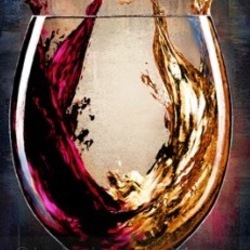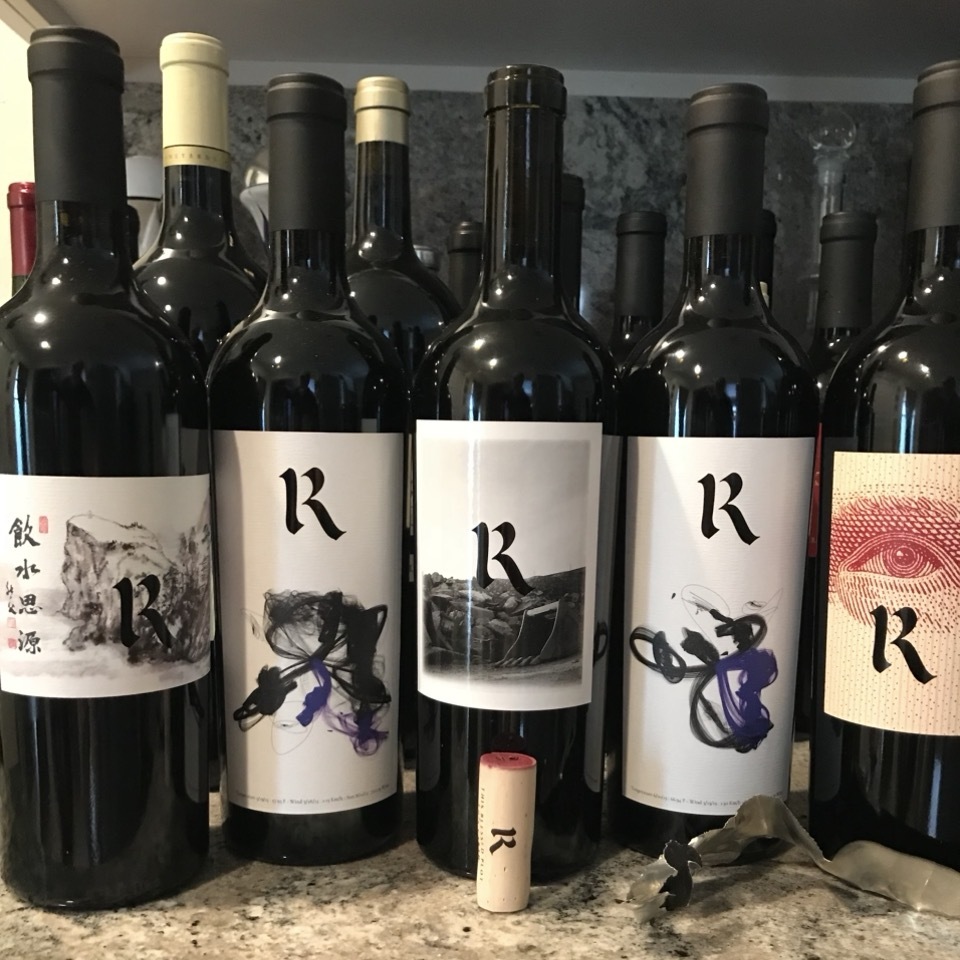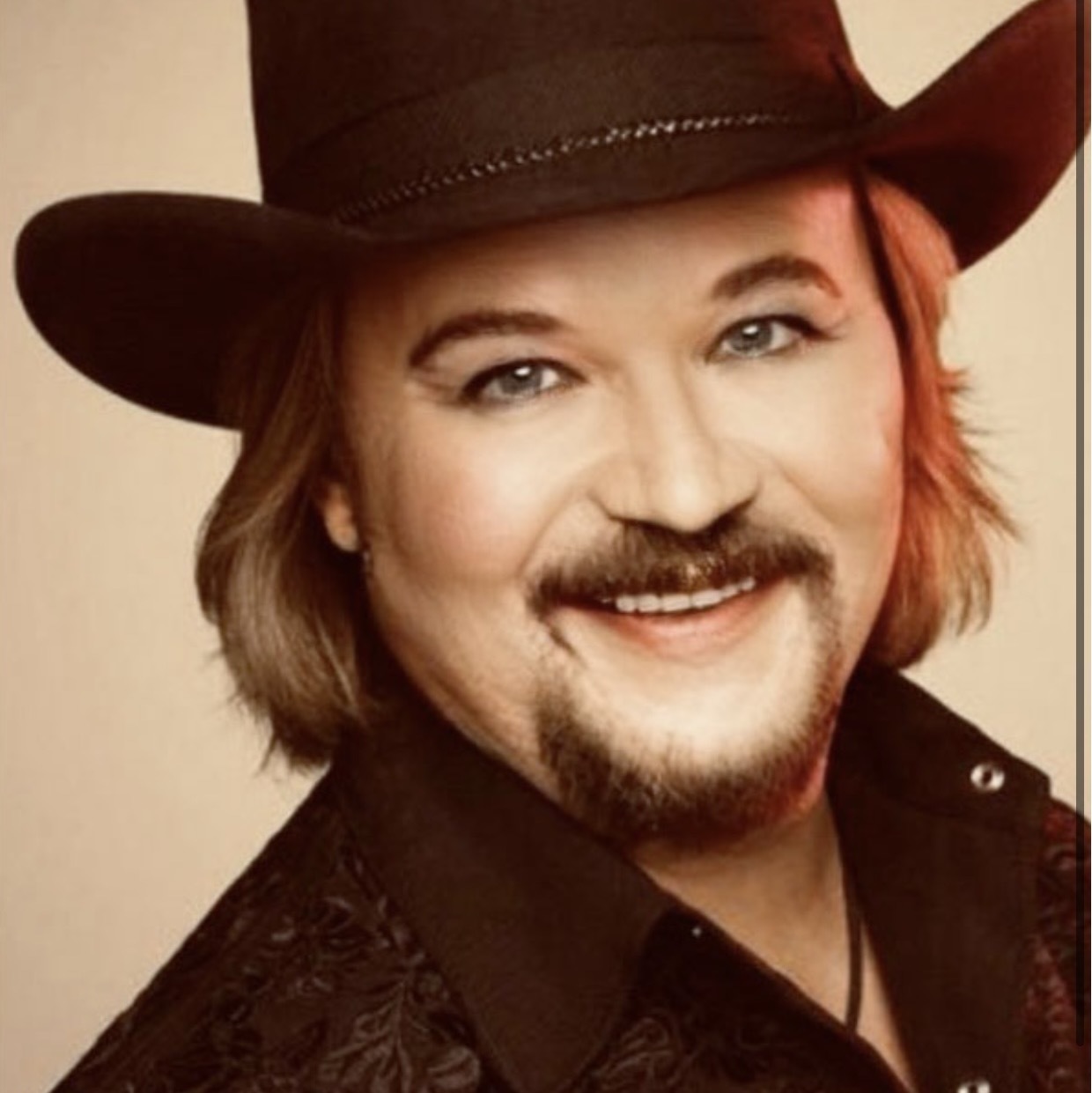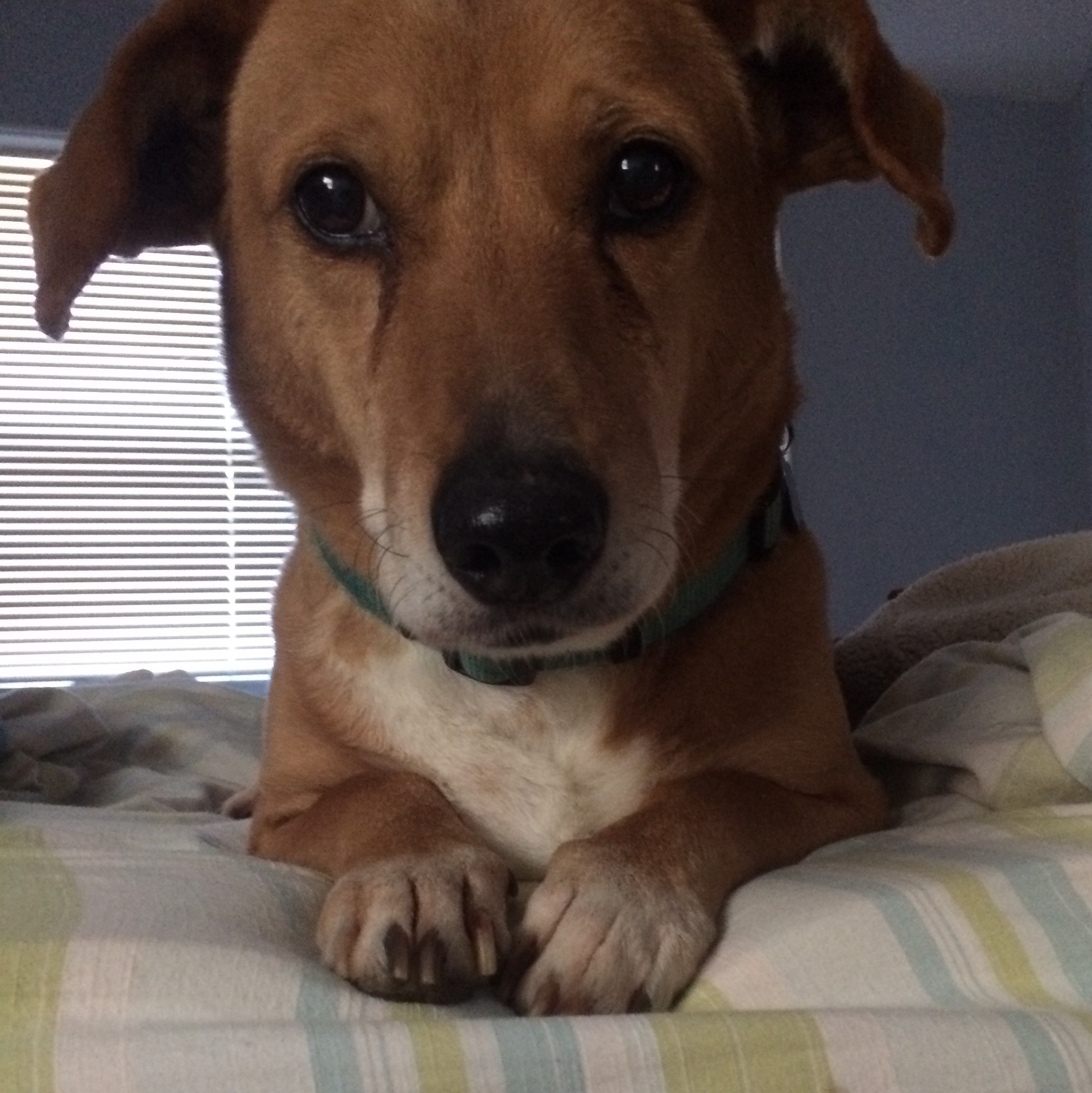Triple Oak Wine Vault
White Oak Vineyards & Winery
Napa Valley Dessert Wine 2011
This went amazingly well with a triple fudge brownie. Great nose, smooth, not hot at all. Just wonderful. — 5 years ago
Burley Oak Brewing Company
Triple Blackberry Black Currant J.R.E.A.M
A delicious refreshing sour! Love this and will want more of it this summer. — 5 years ago
Denis Montanar
Triple "A" ScodovH Verduzzo
This one is interesting (hints of dark fruit jamminess and slightly green with a hint of oak); there are aspects of it that seem fortified, others that illustrate it’s Orange Wine origins, and still others that make it very drinkable without leaning too far in one direction or the next. Still, there’s an interesting level of a refinement (that presumably comes with age - ‘10). Based on my preferences, I shouldn’t like it… but I really do? — 6 years ago
Benhaim
Vin Hors Series Mythos Mount Meron Merlot Petite Sirah 2014
Time for #MerlotThursday. Here is a tasty one from Israel.
Dark ruby in color with a wide reddish/ brick rim.
Pretty nose of blueberries, black currants, plums, sweet cherries, wood, licorice, spices, vanilla, earth, light vegetables, milk chocolates, black pepper and tobacco.
Medium plus in body with medium acidity and long legs.
Dry on the palate with blackberries, black currants, sweet cherries, cedar, leather, earth, vanilla, licorice, chocolates, tobacco, herbs, spices and peppercorn.
Long finish with fine tannins and tangy cranberries.
This Israeli Petite Syrah /Merlot blend is very enjoyable now. Spicy and elegant with lots of fruits. Showing nice complexity and a great mouthfeel.
This five year old is drinking very nicely now, and will continue to age nicely in the next 10 years.
Good right out of the bottle and gets more complexity as it opens up (30 minutes). Right out of the bottle, it reminds me of an elegant Napa Bordeaux blend. After two hours in a decanter, it changes somewhat, and it feels more like a right Bank Bordeaux.
A very interesting wine, and nice as a sipping wine to enjoy with friends and talk about.
This series is not produced every year. This is bottle number 50 out of 2,500 produced.
Good by itself or with food. I paired it with a triple cream Brie cheese, and crackers.
A blend of Merlot, Petite Syrah and Cabernet Franc. Aged for 24 months in New French Oak barrels. Kosher and delicious.
13.5% alcohol by volume.
92 points.
$85. — 6 years ago
Château Lafite Rothschild
Carruades de Lafite Pauillac Red Bordeaux Blend 2003
On the nose, ripe; blackberries, sweet & sour dark cherries, cooked cherries & strawberries & hues of blueberries. Black tea, cola, soft baking spices; vanilla, light clove & cinnamon. Crushed rocks, stones, limestone, turned, moist black earth, tobacco leaf, saddle-wood, soft leather, dry & fresh dark red florals.
The body is medium edging toward full. The tannins pretty well resolved. The ripe fruits show the hot, ripe vintage. Blackberries, sweet & sour dark cherries, cooked cherries & strawberries & hues of blueberries black tea, cola, soft baking spices; vanilla, light clove & cinnamon. Crushed rocks, stones, limestone, tobacco with ash, some graphite, soft medium dark spice, turned, forest floor, powdery but edgy minerals, saddle-wood, soft leather, dry & fresh dark red florals with some violets on the finish.
This showed better with Ribeye. The Ribeye brought out a fuller, richer wine with even more complexity. 9.35-9.4 with the Ribeye. It just missed 9.2 on its own. It’s big brother the 03 “Lafite” is 💯 point Parker wine.
Photos of; Chateau Lafite, their oak vat fermenters, Estate wine and their magnificent barrel room.
Interesting history and producers notes...Lafite Rothschild has a long and interesting history dating back to 1234, even though the property was not in the Bordeaux wine business at that time.
It is has been largely believed that vines were already planted on their terroir. The owner of the estate at the time, Gombaud de Lafite left his mark, his name. Almost 1,000 years after he owned it, the Chateau is still named after him! The vines were probably in existence at Lafite for over a century, it was not until around 1680, the majority of vineyards of what we know of as Lafite Rothschild today were created. This is because on the 1680 estate manifest, there are six mentions of their Bordeaux vineyards. Jacques de Segur, earns credit for cultivating the vineyard as I wrote in my Colon Segur post last weekend. In 1695, Alexandre de Segur married Marie-Therese de Clauzel, heiress to Chateau Latour. So to dovetail that write up, within a generation, the Segur family married into two of the greatest Bordeaux vineyards, Chateau Lafite and Chateau Latour! When their son, Nicolas-Alexandre passed away, Chateau Lafite and Chateau Latour were separated.
In 1797, Chateau Lafite was sold again. In the deed of sale, Chateau Lafite was described as a Premier Cru of Medoc. This is one of the earliest mentions of what we know of today as Lafite Rothschild producing wines of what would later be classified as an 1855 First Growth.
At that time, of Lafite were managed by the Goudal family. The Goudal family were wine historians and were able to read accurate records and details of the viticulture and marketing plans for Chateau Lafite in the estates formative years. The Goudal family gets the credit for creating the cellar and saving many of the oldest bottles that remain in the cold, dark cellars, including their oldest bottle, the 1797 Lafite!
The start of the famous Rothschild family begins in 1744, with the birth of Amschel Meyer. Amschel Meyer began creating his fortune while working as a merchant at “Zum Roten Schild,” which eventually became the family name of Rothschild.
In 1798 his sons were sent to various cities to create their fortunes. Needless to say, his sons all prospered as did their children in turn. This eventually led to them wanting to own a Chateau in Bordeaux. So in 1853, Baron Nathaniel de Rothschild, an English member of the Rothschild family, purchased Chateau Brane-Mouton. As was the custom of the day, the new owner renamed it using his name and Chateau Mouton Rothschild was born.
This was followed in 1868, when James Rothschild, another member of the family purchased Chateau Lafite, which was now a coveted First Growth.
On 8 August, 1868, Baron James d’Rothschild purchased Chateau Lafite, which was sold at a public auction in Paris. It’s assumed, he bought the property for family competitive reasons looking to one up his brother, the owner of Mouton Rothschild. At that time, Mouton Rothschild was only a Second Growth at the time. But, that does not paint the entire picture. The 1855 Classification had not taken on the importance associated with it the we see it today. Plus, buying Lafite was a reasonable investment as the vineyard sold for about 8 times its earning potential.
The actual Chateau is one of the older structures in Bordeaux, as part of the building dates back to the later part of the 16th century. In 1868, the vineyard took up 135 hectares, of which 74 hectares were cultivated with vines. Production was much smaller in those days than it is today as it was between 4,000 and 5,000 cases.
Just three months after the purchase, Baron James d’Rothschild passed away and Chateau Lafite Rothschild became the joint property of his three sons; Alphonse Rothschild, Gustave Rothschild & Edmond Rothschild. Since 1868, Chateau Lafite Rothschild has remained in the hands of the of Rothschild family. The new owners renamed the estate Chateau Lafite Rothschild.
Jumping ahead to the modern age, in 1962, the Rothschild family added to their holdings when they purchased Chateau Duhart-Milon, a Fourth Growth vineyard also located in Pauillac. It was owned by the Casteja family for more than a century, Chateau Duhart Milon suffered from neglect and was in a awful condition. By the time Duhart Milon was obtained by the Rothschild family, the vineyard was down to only 17 hectare which required extensive renovations.
Baron Eric Rothschild, nephew of Baron Elie Rothschild, took over the management of Lafite Rothschild in 1974. Baron Eric Rothschild was part of the fifth Rothschild generation to inherit Chateau Lafite Rothschild. In 1984, the Rothschild family added to their holdings in Bordeaux with the purchase of Chateau Rieussec in Sauternes.
1987 was a difficult vintage, but because that was the year Lafite celebrated the inauguration of their wine new cellar, they had a lot to be excited about.
The new cellars were built under the supervision of Catalan architect Ricartdo Bofill, is both underground and circular, with a vault supported by 16 columns, giving the structure a majestic architectural style. The cellar holds 2,200 barrels, which is about 55,000 cases of wine. The construction took two years to finish and was completed in 1988.
Domaines Baron Rothschild became one of the first Bordeaux properties to invest in South America when they purchased Vina Los Vascos from a Chilean family. The owners of Lafite Rothschild continued expanding their holdings with the purchase of Chateau lEvangile in Pomerol from the Ducasse family, who owned the property for almost 100 years.
The wine making at Chateau Lafite Rothschild was managed by Charles Chevallier, who began his position in 1994. Charles Chevallier was replaced by Eric Kohler in January 2016. 2017 saw another change at the estate when Jean Guillaume Prats replaced Christopher Salin as the President of Domaines Baron Rothschild.
Perhaps, it’s the most refined of the First Growth. The wine, like all First Growth’s takes decades to mature. It has remarkable staying powers. Bottles of 1870 Lafite Rothschild discovered in the Glamis castle remain profound at more than 140 years of age! It is consider by many Master Sommeliers to be the best wine in the world.
Chateau Lafite Rothschild is one of the earliest major Bordeaux estates to bottle their own wine. In 1890, they bottled a large portion of the wine and again in 1906. Part of the estate bottling was due to requests from Negociants who were willing to pay more for Chateau bottled wines. Also, bottling was primarily done to combat piracy. At the time, it was known that merchants in some countries, like Russia were bottling cheap wine and placing labels from Lafite Rothschild on the bottles. The Koch’s famous Jefferson bottles were not the first attempt at counterfeiting.
Prior to 1996, some would say the property had its share of ups and downs. The 1960’s and 1970’s were not great for Chateau Lafite Rothschild. But since 1996, Lafite Rothschild has been producing some of the best wine in their history!
Sadly, only the wealthy can afford to purchase it. Price aside, there is no denying the level of quality. In 2003 Lafite Rothschild produced a wine that is possibly unequaled by the estate at any time in their long history. Hence, my purchase of their 03 second wine. 2009, 2010 and 2016 are not far behind.
Starting in about 2008, Lafite Rothschild became the most collectible wine from Bordeaux. Prices exploded due to demand from China as Chinese businessmen bought them as gifts or bribes depending on you look at it.
The reason this started was Lafite Rothschild paid for product placement on the number one rated Chinese soap opera on television. Characters in that show were pictured enjoying life with Lafite Rothschild and since then demand went through the roof as did priced.
However, Issac Newton had it right when he declared “What goes up, must come down.” Prices for Lafite Rothschild plummeted after 2011. By the difficult 2013, prices were finally starting to hold firm, but many of the vintages that were setting price records on a daily basis had lost close to 50% of their value.
Starting with the 2012 vintage, Chateau Lafite Rothschild began instituting anti-counterfeiting measures. From 2012 forward, to help fight, rampant counterfeiting, the estate places a seal of authenticity on the capsules of both Lafite Rothschild and Carruades de Lafite. The seal features a unique, numbered code that can be checked on their website, to verify if the wine is real.
The 112 hectare vineyard of Chateau Lafite Rothschild is planted to 70% Cabernet Sauvignon, 25% Merlot, 3% Cabernet Franc and 2% Petit Verdot. This shows a slight change in the vineyard.
While Cabernet Sauvignon remained at 70%, today there is slightly more Merlot, less Cabernet Franc and the Petit Verdot has been added since the mid 1990’s.
Located in the far north of the Pauillac appellation, only the small, Jalle de Breuil stream separates the vineyards from St. Estephe. You could divide the vineyards of Chateau Lafite Rothschild into three sections with 100 separate parcels in all. The estate has close to 50 hectares of vines located close to the Chateau, on both sides of the D2, which offers gentle rises in elevations of up to 27 meters. They also have about 50 hectares vines planted on the plateau in the Carruades sector, where they have two blocks of vines, one of which is inside the vineyard of Chateau Mouton Rothschild. It is interesting to note that even though the parcels in the Carruades sector give their name to the second wine of the estate, those vines are almost always placed in the Grand Vin.
There are also vines adjacent to, and interspersed with the vineyards of Chateau Duhart Milon. The property also consists of a smaller, 4.5 hectare parcel of vines located in the Saint Estephe appellation, “La Caillava”. The vines in St. Estephe are situated not that far from Cos d Estournel, which are located on a larger a parcel known as Blanquet. The vines in Saint Estephe are allowed to be placed into the wine of Chateau Lafite Rothschild because those vines were used to produce Lafite in 1885, at the time of the classification. The vineyards are close to their famous neighbor Mouton Rothschild.
Located just south of the Chateau, the best terroir of Lafite Rothschild has a thick layer of gravel with sand, clay, marl and limestone in the soils with rolling, gravel slopes. The gravel can be as deep as 4 meters in some parcels.
It is important to note that even though their vineyards are in the far north of Pauillac, most of the soil is pure gravel, rocks and stones. With more than 50% of the soil consisting of gravel, that is a large part of the reason Lafite Rothschild has such elegant, feminine textures and that coveted sensation of minerality.
On average, the vines are close to 40 years of age. However, Chateau Lafite Rothschild has much older vines. In fact, they have some vines that are more than 100 years of age planted in the La Graviere section. That small parcel of Merlot vines dates back to 1886. Less than 1% of the vines are that old.
Additionally, they have a small section of Cabernet Sauvignon that dates back to 1922! Other old vines range from 50 to 90 years of age! They also maintain some of the oldest Petit Verdot vines in the Medoc that was planted in the early 1930’s.
At Chateau Lafite Rothschild, between 1% to 1.5% of the vineyard is replanted every year. Vines less than 20 years of age are never included in the Grand Vin.
The vineyard of Chateau Lafite Rothschild is planted to a vine density that ranges from 7,500 to 8,500 vines per hectare. Only organic fertilizers are used in the vineyards of Lafite Rothschild.
During harvest, the goal is not to pick at the maximum level of ripeness. Instead, they are seeking a blend of grapes at differing levels of maturity, which gives the wine its unique textures, freshness, aromatic complexities and elegant sensations.
Lafite Rothschild is the largest of the First Growth vineyards with close to 112 hectares of vines. A large portion of the estate is taken up with stunningly, beautiful landscaping, lakes, trees and parkland.
At one point in time, Chateau Lafite Rothschild produced a dry white, Bordeaux wine that was sold as Vin de Chateau Lafite. The wine was produced from a large percentage of Semillon, blended with a small amount of Sauvignon Blanc. The last vintage for their white wine was 1960. The wine was sold as a generic AOC Bordeaux blanc with a simple, scripted label, black and white label.
Lafite vinification takes place in 66 vats that are a combination of 29 wood vats, 20 stainless steel tanks and 17 concrete vats that range in size from as small as 45 hectoliters up to 123 hectoliters in the concrete and as large as 270 hectoliters for the wood. The wide range of vat sizes coupled with different materials allow Chateau Lafite Rothschild to vinify depending on the needs of each specific parcel and grape variety. The stainless steel tanks and oak vats are used for Cabernet Sauvignon. The Merlot is vinified in the concrete tanks. Malolactic fermentation occurs in smaller, stainless steel tanks that vary in size from 25 hectoliters up to 60 hectoliters. At this point, Chateau Lafite Rothschild does not yet use gravity to move the fruit and juice in the cellar. It’s a good bet that a remodel is coming soon.
The average annual production of Chateau Lafite Rothschild ranges from 15,000 to 20,000 cases of wine per year, depending on the vintage. They of course make this second wine, Carruades de Lafite, which due to the name and association with the Grand Cru, has also become extremely collectible. Carruades de Lafite takes its name from a specific section of their vineyard that is located near Mouton Rothschild. Carruades is actually one of the older second wines in Bordeaux, as it was first produced in the mid 1850’s. About 100 years later during the mid 1960s, the estate reintroduced their second wine naming it Moulin de Carruades. The name was changed again in the 1980’s to Carruades de Lafite.
There is also a third wine which is sold as an AOC Pauillac that is produced from declassified fruit from Lafite Rothschild and Duhart-Milon.
The blend for Chateau Lafite Rothschild changes with each vintage depending on the character and quality of the vintage. Generally speaking, the amount of Cabernet Sauvignon in the blend ranges from 80% to 95%. Merlot is usually 5% to 20%. Cabernet Franc and Petit Verdot usually varies from 0 to 5%.
— 7 years ago

Broc Cellars
Luna Matta Vineyard Mourvèdre 2009
This is great, but was shocked that it had so much oak characteristics. Not what I was expecting! Nose is wonderful plums, fresh herbs, cedar, and even a bit of leather. Palate is more plums, cherries, red apple skin, then oak, baking spice. I really like it and would have never guessed this as a broc wine. Fascinating to go back in their vault. Would love to know more about this one. — 4 years ago
Bee Hunter
Docker Hill Vineyard Pinot Noir 2015
Ruby in color with a wide reddish, cloudy rim.
Fruity nose with sweet raspberries, bing cherries, blueberries, vanilla, light oak, light vegetables, spices and black pepper.
Medium plus in body with medium plus acidity.
Dry on the palate with black cherries, plums, sweet strawberries, raspberries, spices, light chocolates, earth, black pepper and herbs.
Long finish with fine grained tannins and tangy raspberries.
The six-year-old from Mendocino County, drinks like a fresh wine. Easy drinking right out of the bottle, and very pleasant. A Good quality Pinot Noir.
Fruit forward and rich. Tangy and tasty. Good by itself or with food.
This Single Vineyard is well balanced with nice complexity and a soft mouthfeel.
This Pinot Noir seems to be aging nicely, and will continue to drink well in the next 5 years. Tangy and interesting. A great wine to sip on by the porch.
I paired it with a triple cream Brie cheese with wild mushrooms.
Aged in French oak barrels (30% new) for 2 years.
14.9% alcohol by volume.
91 points.
$60. — 5 years ago
Heitz Cellar
Trailside Vineyard Napa Valley Cabernet Sauvignon 1997
Stupidly; elegant, beautiful, complex and such a steal at $69.99
The nose reveals, gummy, ripe, floral; blackberries, black raspberries, black plum, dark cherries, black plum, raspberries, touch of blueberries, mulberries & boysenberries. Fruit cola melody, dark chocolate, mocha, caramel, dark spice, softly layered; clove, nutmeg, understated cinnamon & vanilla, anise, steeped black, fruit tea, bay leaf, sage, mint, dry crushed rocks, limestone, dry twig, volcanic, dry clay, dry top soil, forest floor, mushrooms, anise, graphite, fresh & dry tobacco with candied, brightly floral, fresh & withering; dark, red, purple & blue flowers framed in mixed; wild, greens and fields of lavender.
The body is elegantly, round, velvety, ruby & creamy. The tension, structure, length and balance are at their high point. It glides beautifully with juicy fruits. This is a gleaming example of why I love well aged & stored Heitz. Gummy, ripe, floral; blackberries, black raspberries, dark cherries, black plum, plum, raspberries, touch of blueberries, mulberries & boysenberries, dry pomegranate & cranberries with dark raisins, dates & a little fig. Dark fruit melody cola, touch of bandaid/VA, dark chocolate, mocha, caramel, dark spice, dark expresso roast, softly layered; clove, nutmeg, understated cinnamon & vanilla, anise, steeped black, fruit tea, bay leaf, sage, mint, dry crushed rocks, limestone, dry twig, volcanic minerals, dry clay, dry top soil, forest floor, mushrooms, anise, graphite, fresh & dry tobacco with candied, brightly floral, fresh & withering; dark, red, purple & blue flowers framed in mixed; wild, greens and fields of lavender. It’s has perfect round, warm, rain shower acidity. The finish is everything I look for in an aged, Napa Cabernet. The 97 Trailside has flushed out into a dark, incredibly well knitted, triple balanced in fruit, earth & herbs, yielding into dark spice with a little palate heat on the long set & persists longer than minutes.
The 1997 still has 10–15 years of good drinking ahead. Properly stored of course.
Photo of; Heitz Winery, old oak wood vats, old school basket press and tasting room signage & vines. — 5 years ago
Bodegas y Viñedos Vega Sicilia
Unico Ribera del Duero Tempranillo Blend 2004
In preparing for an upcoming trip to 🇪🇸 we popped a stunning £235 Vega now £320+ Fabulicious now but will be an epic change your trousers moment in time 😍 I better get some spare ones ready 😁 Like eating a decadent cherry raspberry chocolate gateaux in a bramble bush in secret 😎 One of a few wines I think is worth the big bucks 😉
.
📍Vega Sicilia Unico 2004
.
🏵 98+ points
.
🍇 87% Tempranillo & 13% Cabernet Sauvignon
.
🍷 Opaque deep ruby
.
👃 Rich dark cherry & chocolate gateaux w/ blackberry, vanilla, soft smoked oak & sweet cedar, violets, prune, date, mint driven herbs & blueberry that expressed perfectly in a #zalto bordeaux glass 😍
.
👄 Med+ rich chewy cocoa driven ripe concentrated black cherry creamy smooth satin silk body w/ mineral, blackberry, blueberry, raspberry & purple damson
.
🎯 Long triple chocy cherry & black berry mouth filling sexylicious yummyness
.
⚠️ No trousers were harmed in this review 🤣
.
😋 Mrs Es review “It’s Yummy”
.
🚨 Don’t forget to enter the Instagram competition for 10k friends to be in with a chance to win a vSpin from @openyourwine & 2 Zalto Burgundy glasses from @zaltify — 7 years ago
Grieve Family Winery
Napa Valley Sauvignon Blanc 2013
Coldest vineyards in Napa. Sancerre-like. Triple fermented in steel, egg and oak. Great depth of flavor and complexity. Delicious SB here. — 8 years ago
Auchentoshan Distillery
Blood Oak Triple Distilled Single Malt Scotch Whisky
Delicious — 8 years ago
Royal Oak Distillery
The Busker Triple Cask Triple Smooth Irish Whiskey Review
The Irish know what they’re doing when it comes to whiskey 😋 — 4 years ago
Abrachan
Triple Oak Matured Blended Malt Scotch Whisky
A cracking little peated blended whisky — 4 years ago
Triple B
California Red Blend 2018
Well balanced & yes a little oak finish. Nice! — 5 years ago
Tenuta dell'Ornellaia
Bolgheri Red Bordeaux Blend 2003
Happy New Year everyone! Here is a beautiful Italian Bordeaux blend.
Very dark ruby in color with a wide reddish /brick rim.
Great nose of blueberries, blackberries, black currants, cedar, earth, vanilla, licorice, chocolates, wet leaves, leather, mushrooms, eucalyptus, peppercorn, vegetables, green pepper, tobacco leaf and spices.
Full bodied, smooth and elegant, with medium acidity and long legs.
Dry on the palate with blackberries, black currants, cooked cherries, cedar, leather, vanilla, licorice, spices, chocolates, tobacco, mocha, coke, earth, light vegetables and black pepper.
Long finish with fine grained tannins and cherries.
This is a great Italian, Cabernet Based, Super Tuscan. Nicely balanced with great complexity. A little hot at the back of the throat still, which will probably go away in the next 5 years.
This 16 year old has a beautiful nose that you can smell on for hours (which I did). Reminds me of a nicely aged Left Bank Bordeaux.
We let it open up for 4 hours. Tannins come in only after 4 hours, so be patient. Will continue to age nicely in the next 20 years. A great quality wine.
Thank you Scott for sharing this with me.
Robert Parker 93 points.
I paired it with cheeses and crackers. Was great with the triple cream truffle Brie cheese.
Delightful and elegant. Tasty and delicious.
A blend of 60% Cabernet Sauvignon, 15% Merlot, 20% Cabernet Franc and 5% Petit Verdot. Aged for 18 months in (70% new) French oak barrels.
14.5% alcohol by volume.
96 points.
$200. — 6 years ago

Slane Castle
Triple Casked Irish Whiskey
Virgin Oak, Seasoned Oak & Sherry Barrel casked. Dried fruit notes and spice. Nuanced Sherry note and a medium warm finish. Fine for the money. — 7 years ago
Bread & Butter Wines
California Chardonnay 2016
Nice, right amount of oak. Perfect with a Mt. Tam triple cream. Will keep stocked
Great price at TJ’s, of course. — 7 years ago
Morlet Family Vineyards
La Proportion Dorée Sonoma County Sémillon Blend 2010
Huh?
Took me awhile to appreciate the nose...
There’s apricot, honey and a firm dosage of oak, of course.
But the odd yet interesting nuances of grilled carrots and parsnips, yellow curry-powder (‘kerrie’) and a yeasty kind of thing that reminds me of Belgian Triple Beer, took some time to grow on me.
On the palate this is more traditional, less surprising, yet very well composed. Rich, luscious, unctuous and dense. Maybe slightly lacking in varietal character, but that could be nitpicking-me — 8 years ago
Domaine de la Taille aux Loups
Triple Zero Montlouis Petillant Chenin Blanc
Like sparkling Chardonnay. French oak, apricot, honeysuckle, low low residual sugar - very dry without the pucker — 9 years ago















Jan de Weerd
Dark, dry, high tannin wine made from whole cluster fermentation and low temperature; no oak. We visited this small charming winery a few years back just south of Mendoza. A small family operation. The father had worked for years for one of the large wineries. Then saved enough money to start his own on just a few hectares. Stacking in the grape plants with double and triple levels of cordons for maximum light interception in this tight area. I could swear they had named each of their grape plants. Well crafted wines, very balanced. — 4 years ago